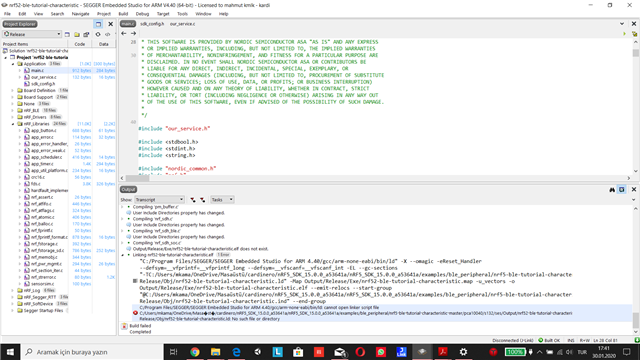
- #One linker script for bootloader and application install#
- #One linker script for bootloader and application drivers#
- #One linker script for bootloader and application full#
#One linker script for bootloader and application drivers#
If your wireless card is not supported, you might need to plug in an ethernet cable and compile the drivers into the kernel. If your wireless card is supported, all the hard parts are already done for you. Configure root userĪfter the sets are installed, you will set a root password. This is the disk encryption password, not any user password. If you selected Encrypt Disks, you will be presented with a password prompt. You will gt a confirmation message asking if you want to destroy the disk(s) you selected. When you are done, proceed with the installation. If you selected Encrypt Disks, you should also select Encrypt Swap You also want to bump up the swap size to ram*1.5 as a general rule (so, for 4g of ram you will set 6g of swap, for 8g or ram you set 12g swap).
#One linker script for bootloader and application full#
If you want full disk encryption, select the Encrypt Disks option. In the Auto(ZFS) menu, for a single hard drive installation, you want to stripe one disk. The Auto(ZFS) option is probably what you want as the default UFS configuration is unjournaled.

Partitioningīsdinstall makes it easy to partition your drives.
#One linker script for bootloader and application install#
I typically only install the lib32 set and add the rest later. New users probably want to install all of them.

set keymap (leave default if you don't know) 2. InstallationįreeBSD has a menu driven installer that walks the user through various steps: 1. The standard steps for installing Linux apply:īecause this is hardware specific, it's a homework assignment for the audience. To burn a memstick image, use the disk destroyer program: xunz sudo dd if=./ of=/dev/sdx sudo eject /dev/sdx It alleviates some of the stress that comes with installing wireless drivers. The mini image is fine but you probably want the regular memstick image if this is the first time you've ever installed FreeBSD. I typically download and use one of the compressed memstick images.

*-mini-memstick.img is a netinstall image for burning to a USB stick.*-memstick.img is a complete image for burning to a USB stick.*-dvd1.iso is a complete DVD image with extra packages.*-disc1.iso is a supplementary CD image for *-bootonly.iso.*-bootonly.iso is a netinstall image that is for burning to a CD.amd64 is probably the one you want if you know nothing about computer architectures. Summary: I talk about configuring FreeBSD as a desktop OS and give tips for those coming from LinuxĬhoose the correct arch for your system.


 0 kommentar(er)
0 kommentar(er)
